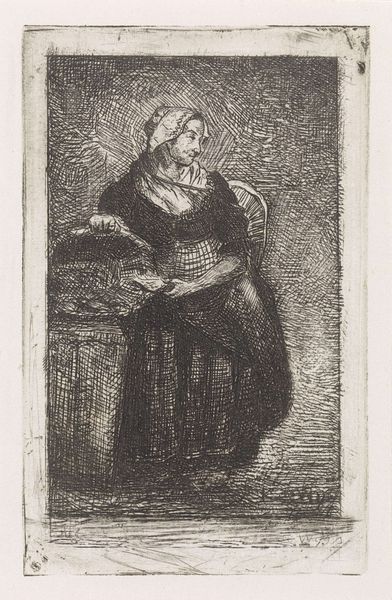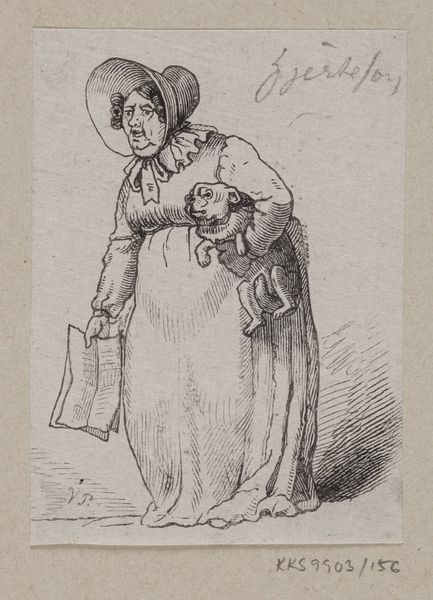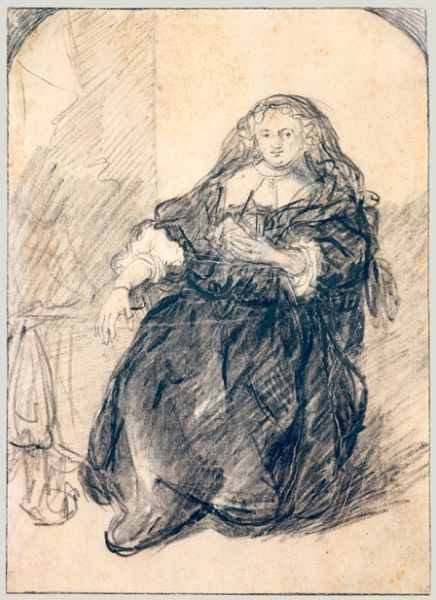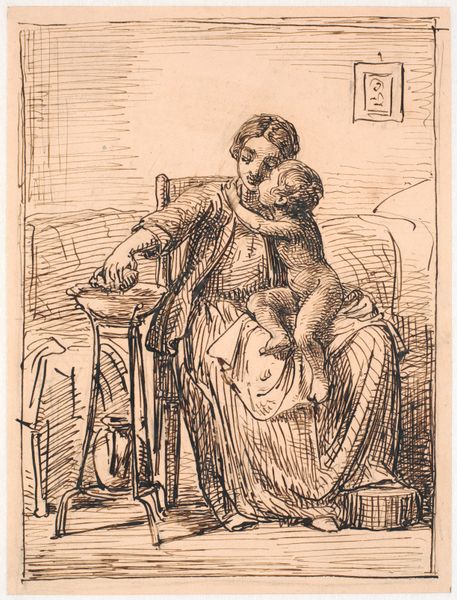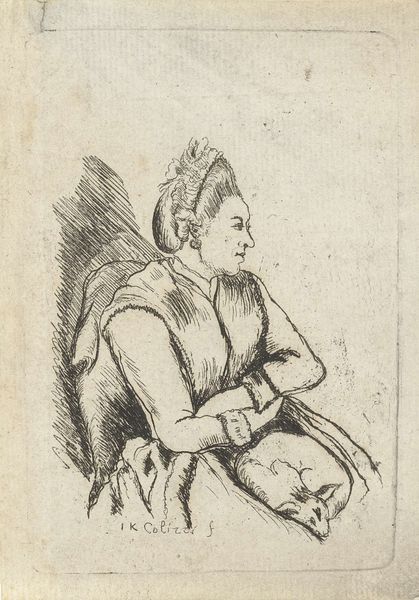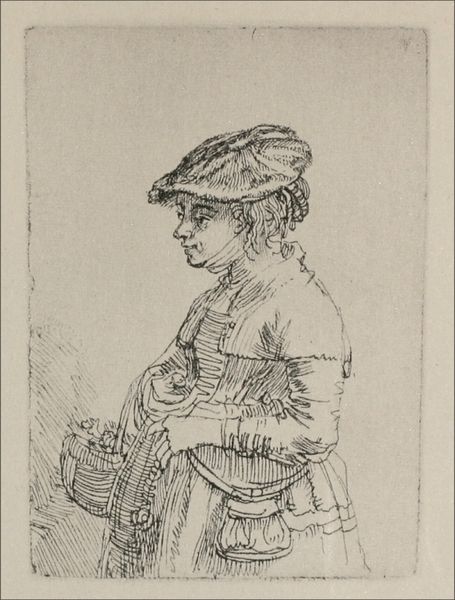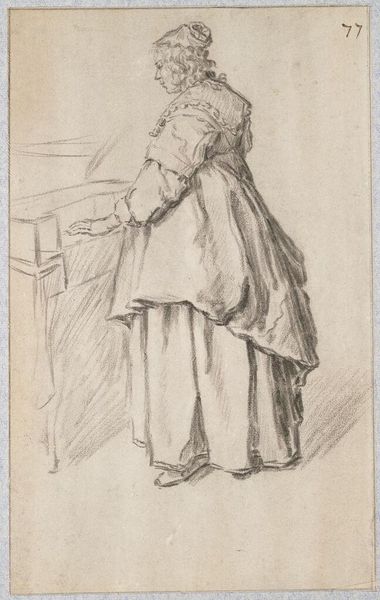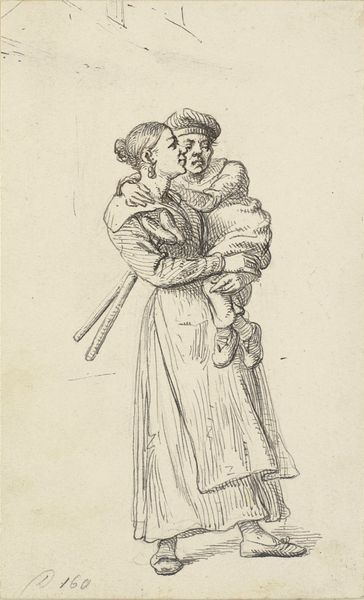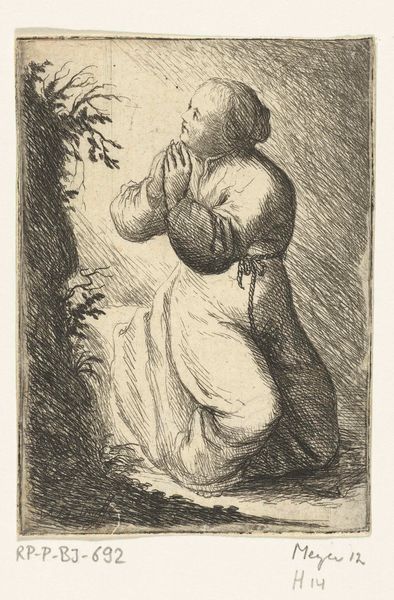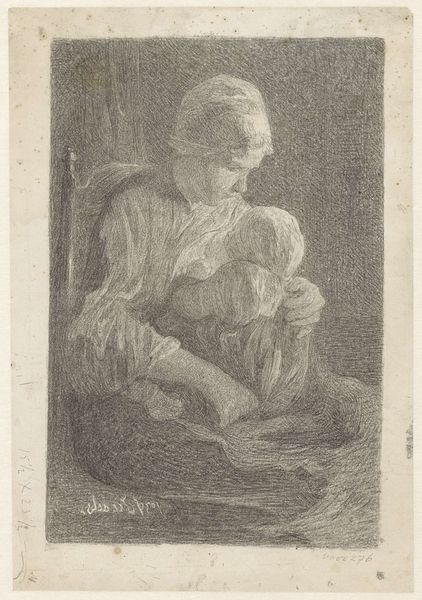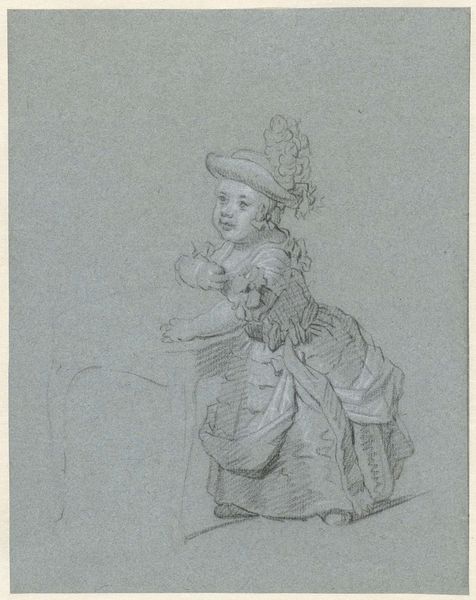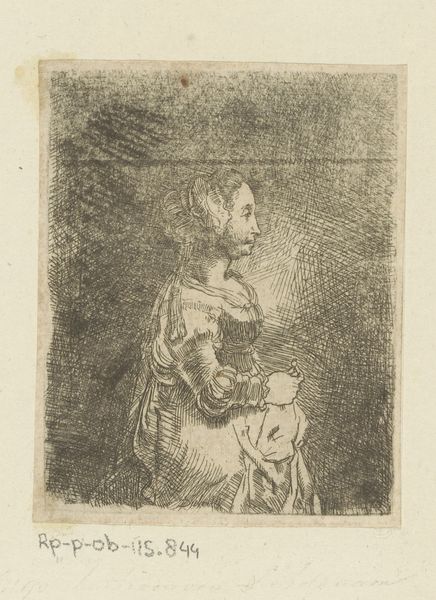
drawing, print, etching
#
portrait
#
drawing
#
dutch-golden-age
# print
#
etching
#
genre-painting
#
realism
Dimensions: height 101 mm, width 64 mm
Copyright: Rijks Museum: Open Domain
Curator: The way this artist captures light and shadow, it almost feels as though we’re intruding on a private moment. Editor: Indeed, and let me introduce you to the piece: it's entitled "Vissersvrouw", dating roughly from 1842 to 1884 and crafted by Kornelis Jzn de Wijs. It's an etching and print, showcasing a genre painting of a fisherwoman. Immediately, the woman’s averted gaze and stance suggest something more than a simple portrait of labor. Curator: Absolutely, and what stands out to me is her averted gaze, how that removes her from our direct observation. It makes me question who had the privilege to observe, to depict, and whose stories were being erased or distorted in this historical narrative? Was it her consent, or simply her acquiescence that made this art possible? Editor: That’s an important angle. This image can also act as a window into 19th-century Dutch society and economy, reflecting the social stratification of the fishing communities, often romanticized, while their daily lives involved precarious hard labor, economic vulnerability and political disempowerment. The artist’s intent is definitely crucial here, whether celebrating the hard work or presenting a specific perspective on womanhood and labor. Curator: Precisely! I find myself thinking about how she might relate to labor movements and struggles for workers' rights, her visual representation existing perhaps to subvert ideas about femininity or woman’s duties within society, especially looking at the way she leans on her tools. Is she just a hardworking laborer? Or are we meant to see the strength and resilience to challenge gender roles, even subtly? Editor: Her attire suggests adherence to tradition and expectation, yet, she does hold the room—she certainly doesn’t seem meek. Understanding how institutions, galleries, museums, and cultural biases have traditionally shaped and presented pieces is necessary, as that very presentation affected the perception and narratives that people built about the piece, and her role in society. Curator: Examining those institutions' roles – both then and now – is key to unlocking broader truths. Looking at this artwork and its journey through history is not just about the fisherwoman on display, it's a reflection on who gets seen, who decides what it means to be seen, and whose stories get told. Editor: Exactly. It reminds us to think critically about the social function of art and images.
Comments
No comments
Be the first to comment and join the conversation on the ultimate creative platform.
